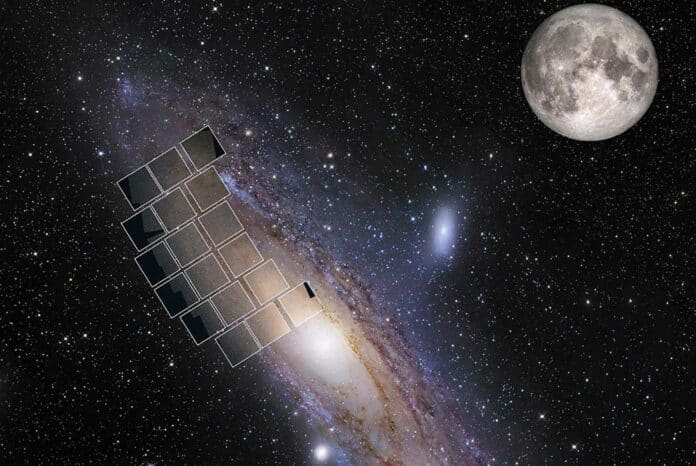Stellar streams are created when smaller galaxies or groups of stars, like globular clusters, are stretched out by the gravitational forces of a larger galaxy they orbit. The streams formed by globular clusters are exciting because they are thin and sensitive to disturbances from smaller mass structures called subhalos.
These disturbances can vary depending on the type of dark matter in the universe. The gaps observed in these streams can offer valuable insights into the nature of dark matter. However, current studies are mostly limited to the Milky Way galaxy.
The upcoming Nancy Grace Roman Space Telescope (Roman) is promising. With its wide field of view, deep imaging capabilities, and high angular resolution, Roman provides a unique opportunity to observe more stellar streams and gaps beyond our Milky Way, allowing scientists to gather additional data for studying dark matter models.
In a recent study, a team of international researchers, including astrophysicists from Northwestern University, has identified the upcoming images from NASA’s Nancy Grace Roman Space Telescope, scheduled to launch by May 2027, as a crucial resource for understanding dark matter.
In the quest to understand dark matter, some astrophysicists have previously concentrated on examining gaps in streams of stars. These gaps are regions where the stellar structures are so delicate that disturbances caused by clumps of dark matter may be detectable. However, investigations into these gaps have primarily focused on the Milky Way.
With the Roman Space Telescope capturing images of the neighboring Andromeda galaxy, scientists anticipate significantly expanding their dataset, offering a broader range of thin stellar streams. This expansion could provide more detailed insights into the specific characteristics of dark matter.
Northwestern’s Tjitske Starkenburg, who co-authored the study, said, “There are stellar streams in our galaxy where we see gaps that might be due to dark matter. But these gaps also can be formed by other means. Our new study makes the case that we will be able to observe these gaps in nearby galaxies other than our own. That will give us better statistics on these gaps, which ultimately will help us better understand the possible existence and properties of dark matter clumps.”
“The reason these streams are most interesting to see the effects of these dark matter clumps is twofold. First, these streams ‘live’ in the extreme outer regions of a galaxy, where there otherwise is very little structure. And second, these streams are intrinsically very thin because they formed from dense clusters of stars, which means you can see gaps or any disturbance much more easily.”
In a recent study, Starkenburg, Aganze, and their collaborators used simulations to model streams of stars. They allowed these simulated streams to interact with clumps of dark matter, creating gaps, and then generated mock observations of these gaps. The team concluded that the upcoming images from the Roman Space Telescope should be able to detect these gaps. Additionally, they estimate that the telescope can efficiently collect this data in as little as one hour of observing time.
The researchers also plan to study the dark matter halo surrounding the Andromeda galaxy in their future observations. While dark matter halos exist around all galaxies, including the Milky Way, scientists expect to find evidence of smaller sub-halos, as current models predict.
Starkenburg said, “We expect smaller dark matter sub-halos to interact with globular cluster streams. If these sub-halos are present in other galaxies, we predict gaps in globular cluster streams likely caused by these sub-halos. That will give us new information about dark matter, including which kinds of dark matter halos are present and what their masses are.”
With NASA’s Nancy Grace Roman Space Telescope Research and Support Participation Opportunities program funding, Starkenburg is already initiating the groundwork for exploring dark matter through a related project.
The team intends to create a more detailed theoretical framework to model how globular clusters evolve into stellar streams. The goal is to predict the formation of globular clusters that give rise to these streams and assess whether these streams will be observable using the Roman Space Telescope.
Journal Reference:
- Christian Aganze, Sarah Pearson, et al. Prospects for Detecting Gaps in Globular Cluster Stellar Streams in External Galaxies with the Nancy Grace Roman Space Telescope. The Astrophysical Journal. arXiv:2305.12045v2
